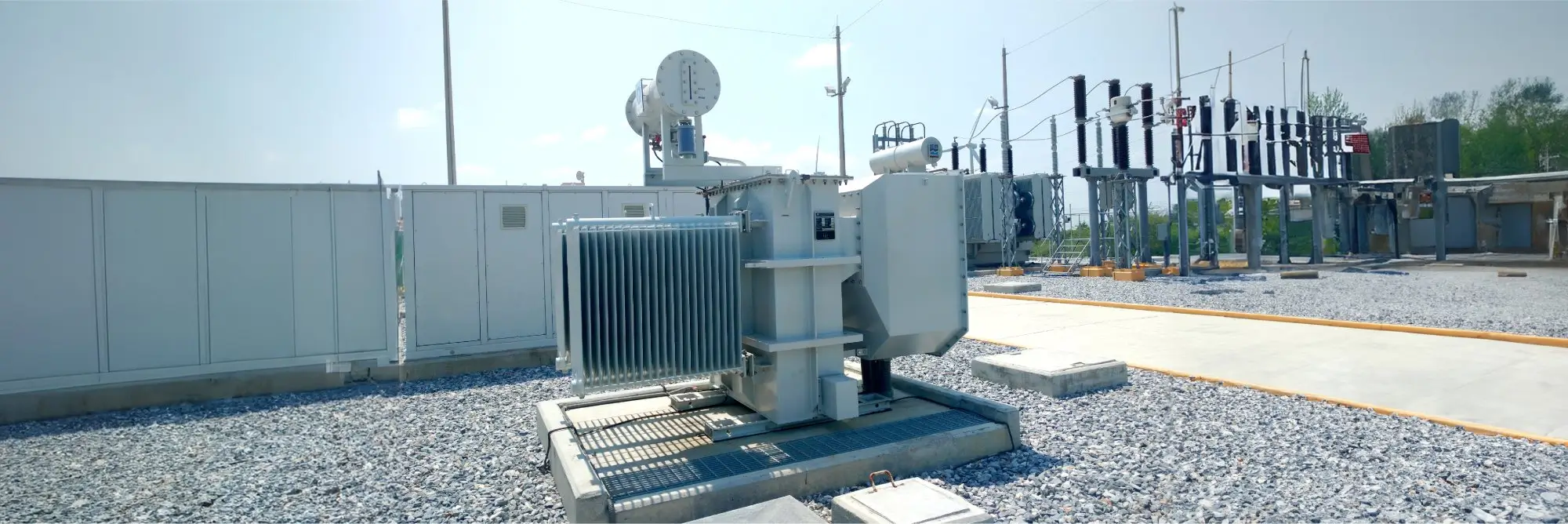
Reactors
Shunt Reactor
Enhancing Voltage Stability and Reducing Losses in Power Systems
A Shunt Reactor is a vital component in electrical power systems, primarily used to absorb reactive power and maintain voltage stability across high-voltage transmission networks. Unlike transformers, which transfer electrical energy between circuits, shunt reactors are specifically designed to consume reactive power, thereby preventing over-voltage conditions, particularly in lightly loaded or no-load scenarios. This functionality is crucial for long transmission lines, where voltage levels can rise significantly due to the capacitive nature of the lines, potentially leading to inefficiencies and equipment damage. By counteracting this effect, Shunt Reactors play a key role in maintaining efficient and reliable power delivery.
Key Functions and Benefits
1 Voltage Regulation
Shunt Reactors are essential for regulating voltage levels on long high-voltage transmission lines. During periods of low demand, when the load on the system is light, the capacitive effect of transmission lines can cause voltages to rise beyond acceptable limits. By absorbing the excess reactive power, Shunt Reactors help to reduce these voltages, ensuring that the system remains within safe operating conditions and protecting both the grid and connected equipment from over-voltage damage.
2 Reactive Power Compensation
Reactive power, while necessary for the operation of alternating current (AC) systems, can lead to inefficiencies if not properly managed. Shunt Reactors provide reactive power compensation by consuming reactive power generated by the inductive and capacitive elements of the network. This helps to balance the reactive power in the system, reducing losses, improving power factor, and enhancing the overall efficiency of power transmission.
3 Enhanced System Stability
In modern power grids, stability is a critical concern, especially with the increasing integration of renewable energy sources that can introduce variability into the system. Shunt Reactors contribute to system stability by damping voltage oscillations and stabilizing voltage levels during load fluctuations. This is particularly important in preventing voltage collapse, a condition that can lead to widespread power outages if not properly managed.
4 Reduction of Transmission Losses
By controlling the reactive power flow and maintaining optimal voltage levels, Shunt Reactors help to reduce the overall transmission losses in the network. This is particularly beneficial in long-distance power transmission, where minimizing losses is crucial for the economic and efficient operation of the grid. Lower losses translate into better utilization of the transmission infrastructure and reduced operational costs for utility companies.
5 Support for Renewable Energy Integration
As power grids evolve to include more renewable energy sources like wind and solar, the role of Shunt Reactors becomes increasingly important. These sources often generate power intermittently, leading to fluctuations in voltage levels. Shunt Reactors help to stabilize the voltage, ensuring that renewable energy can be reliably integrated into the grid without compromising system stability or performance.
Applications
Shunt Reactors are widely used in high-voltage transmission systems, particularly in:
- Long-Distance Transmission Lines: To control voltage levels and prevent over-voltage conditions caused by the capacitive nature of the lines.
- Substations: For voltage regulation and reactive power compensation in transmission and distribution networks.
- Offshore Wind Farms: To stabilize voltage in systems where long submarine cables are used to transmit power to the mainland.
Shunt Reactors are indispensable in modern electrical power systems, offering critical support for voltage regulation, reactive power management, and system stability. By ensuring that voltage levels remain within safe limits and minimizing transmission losses, Shunt Reactors contribute to the efficient, reliable, and sustainable operation of the grid. Whether used in traditional power systems or integrated with renewable energy sources, Shunt Reactors play a crucial role in maintaining the balance and stability of the electrical network, making them a key component in the global energy infrastructure.


